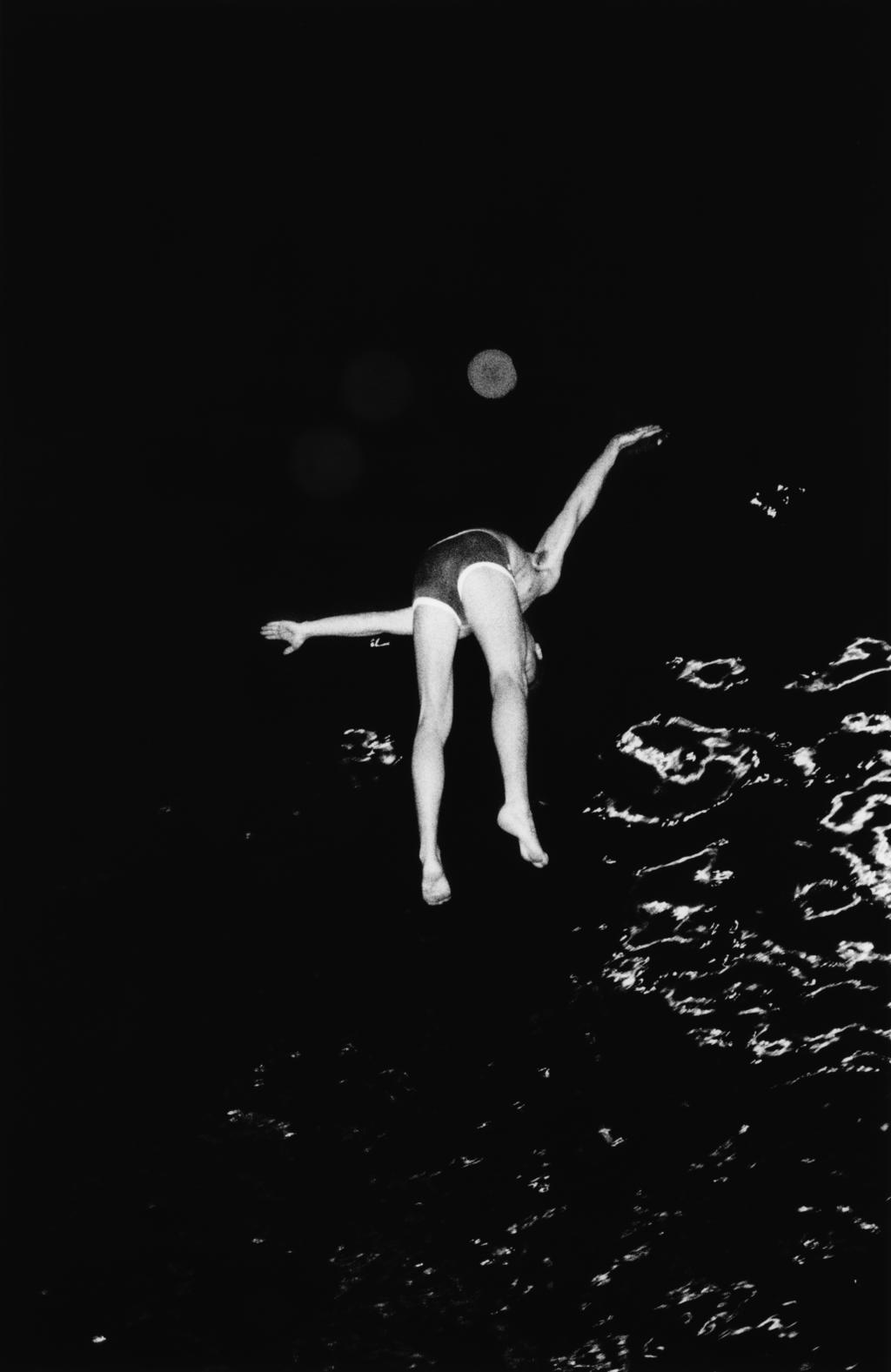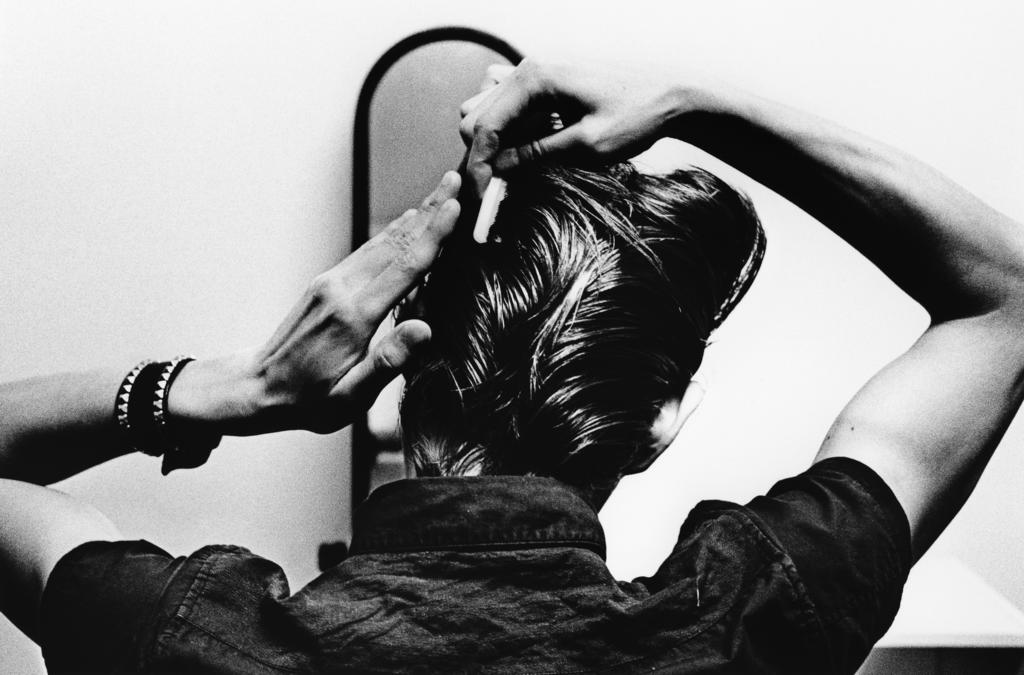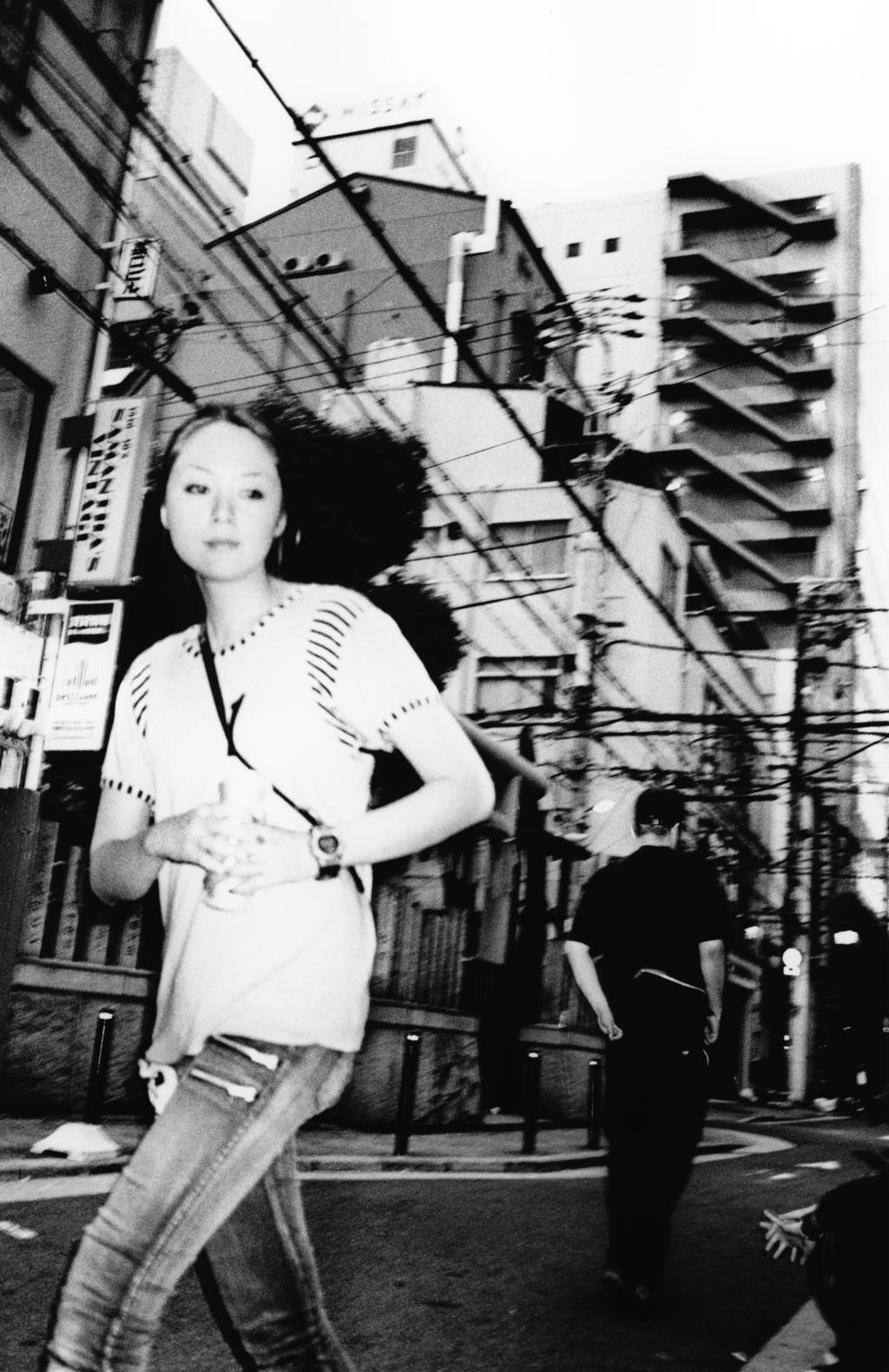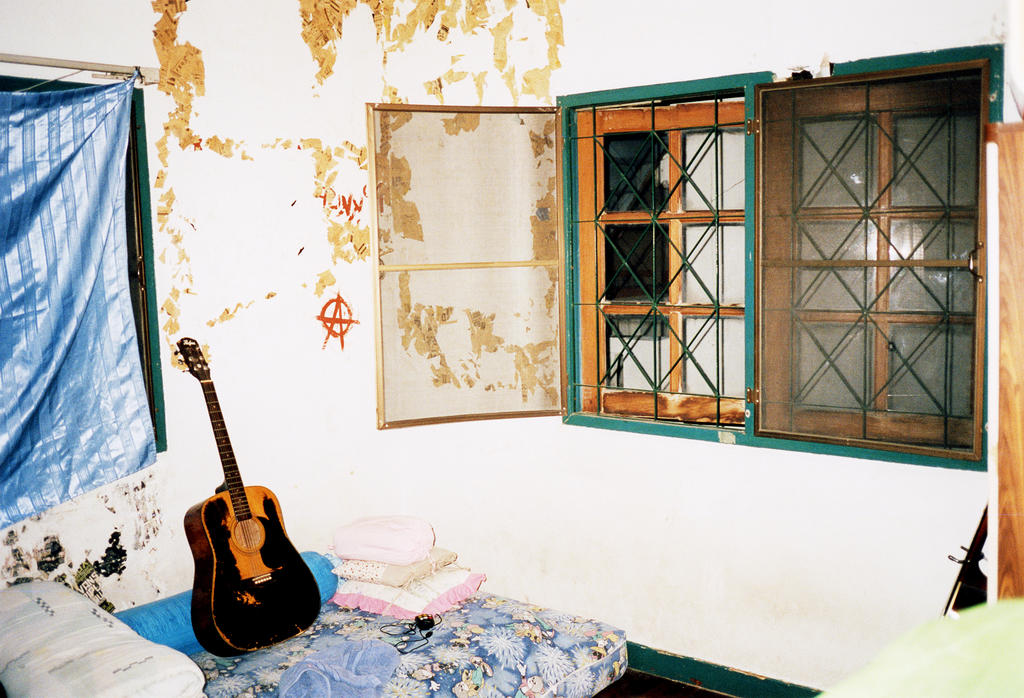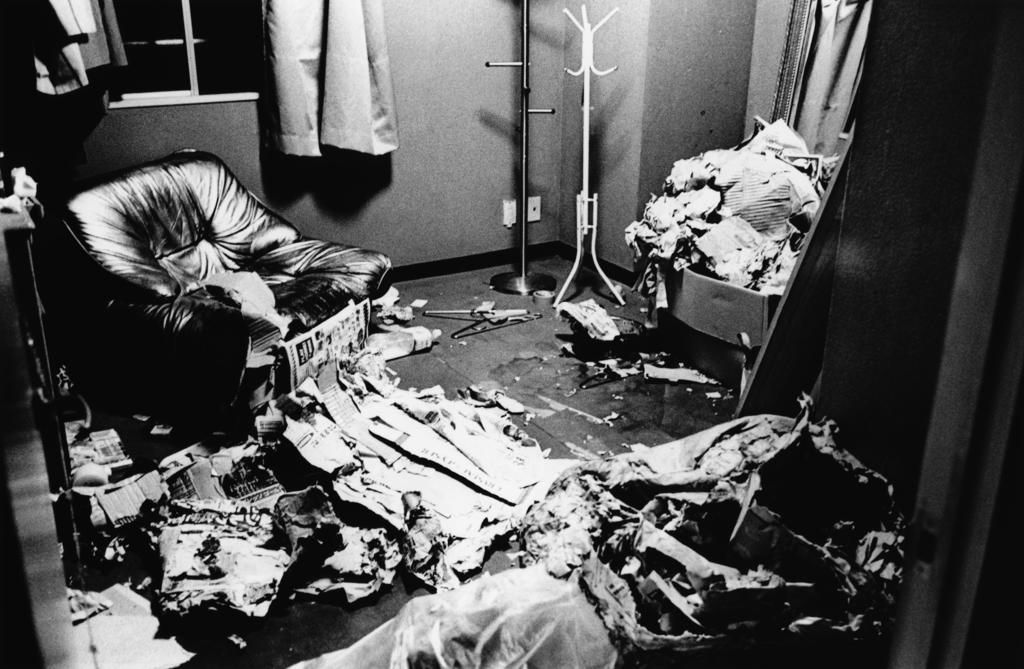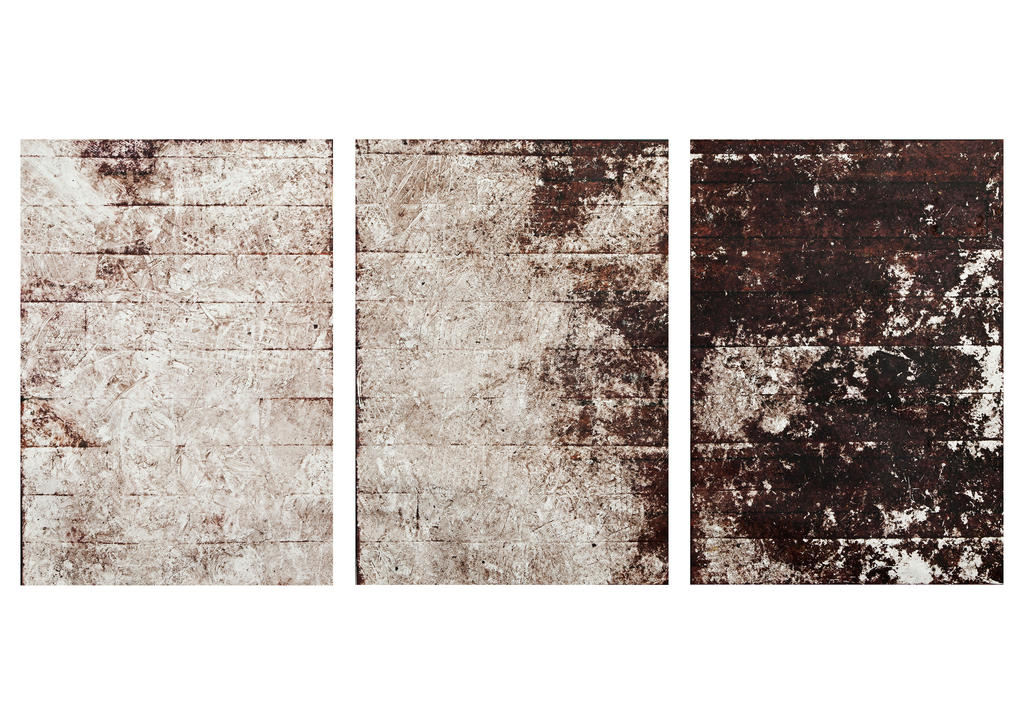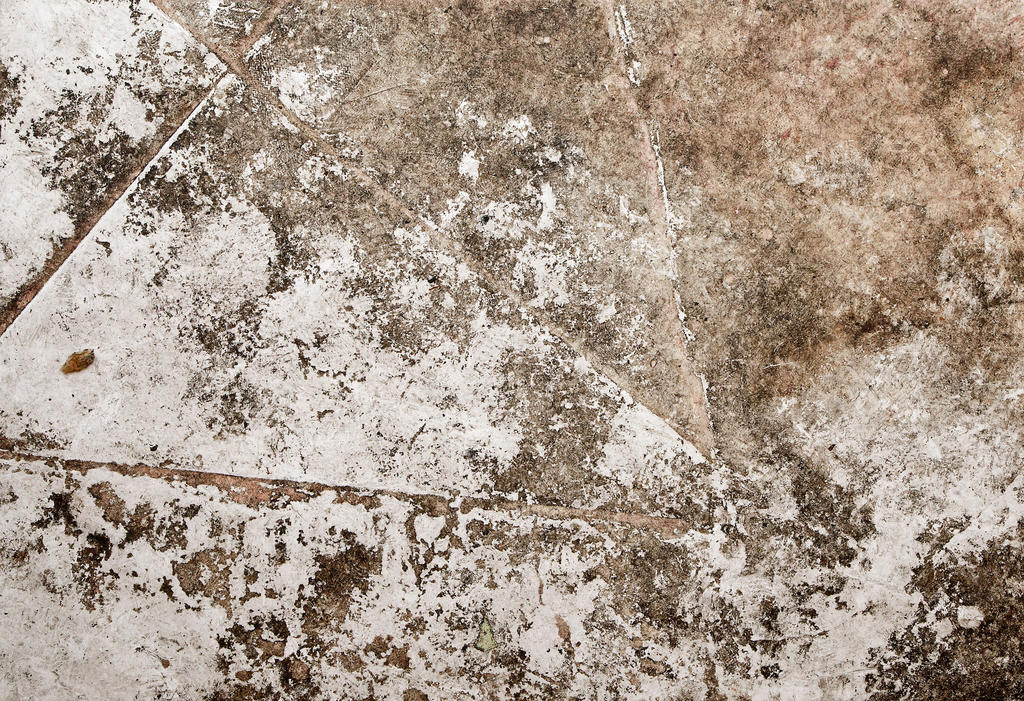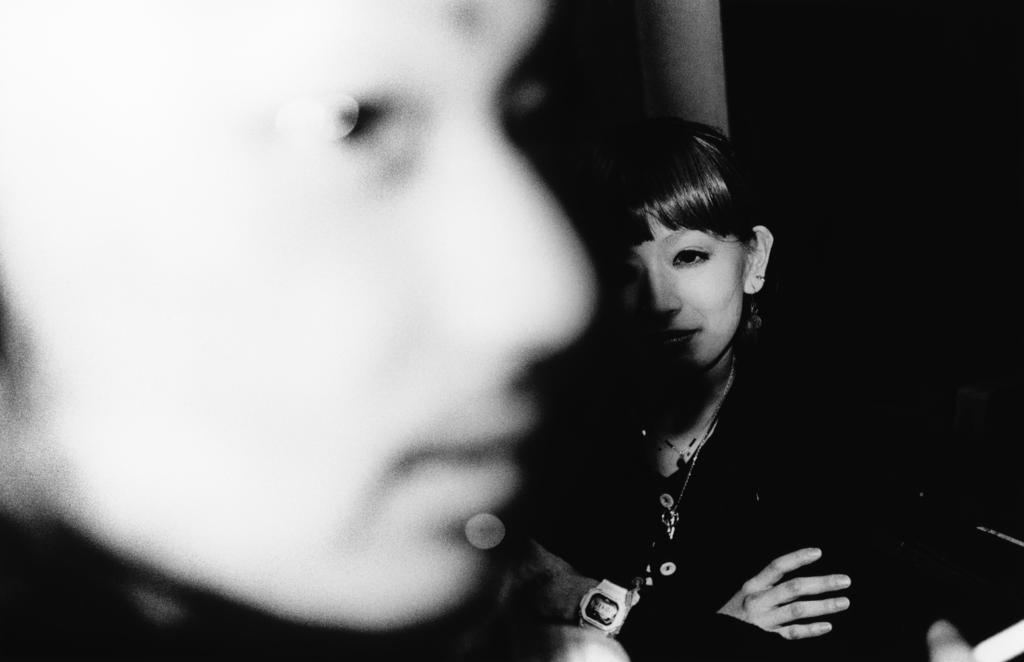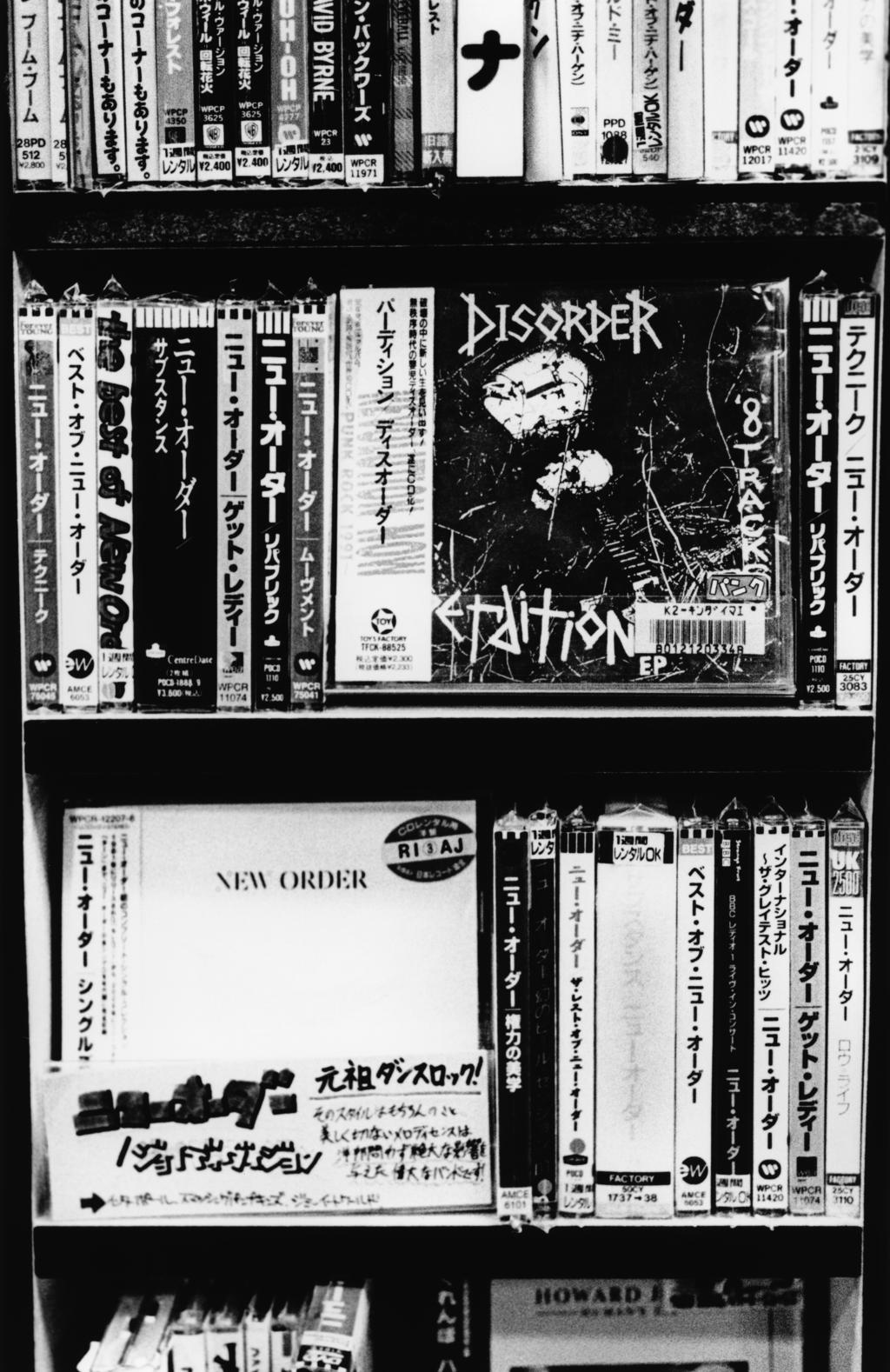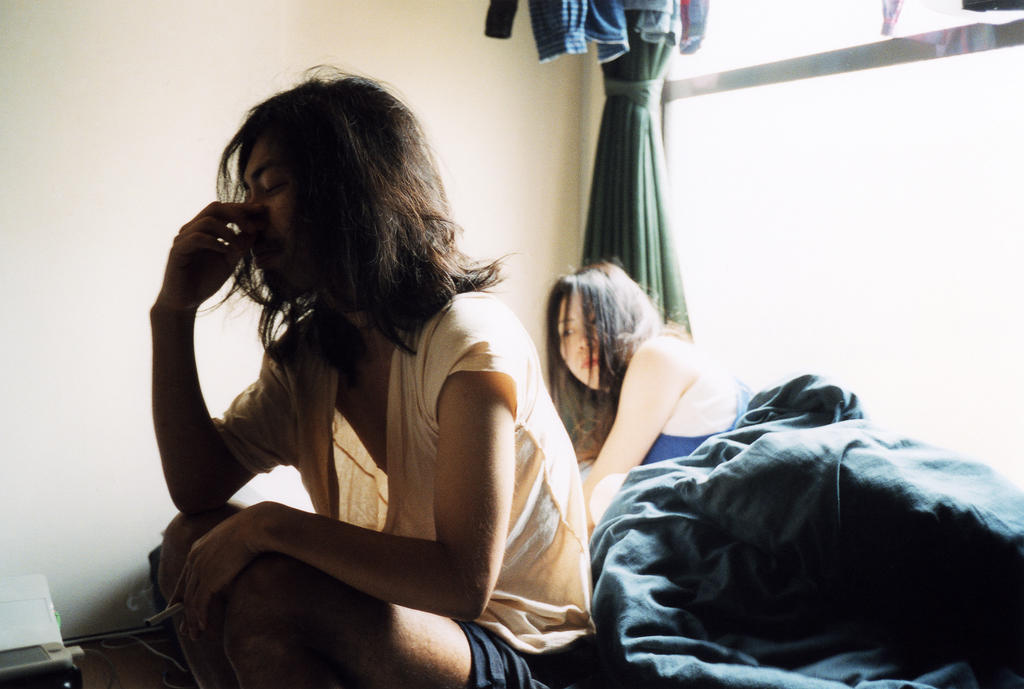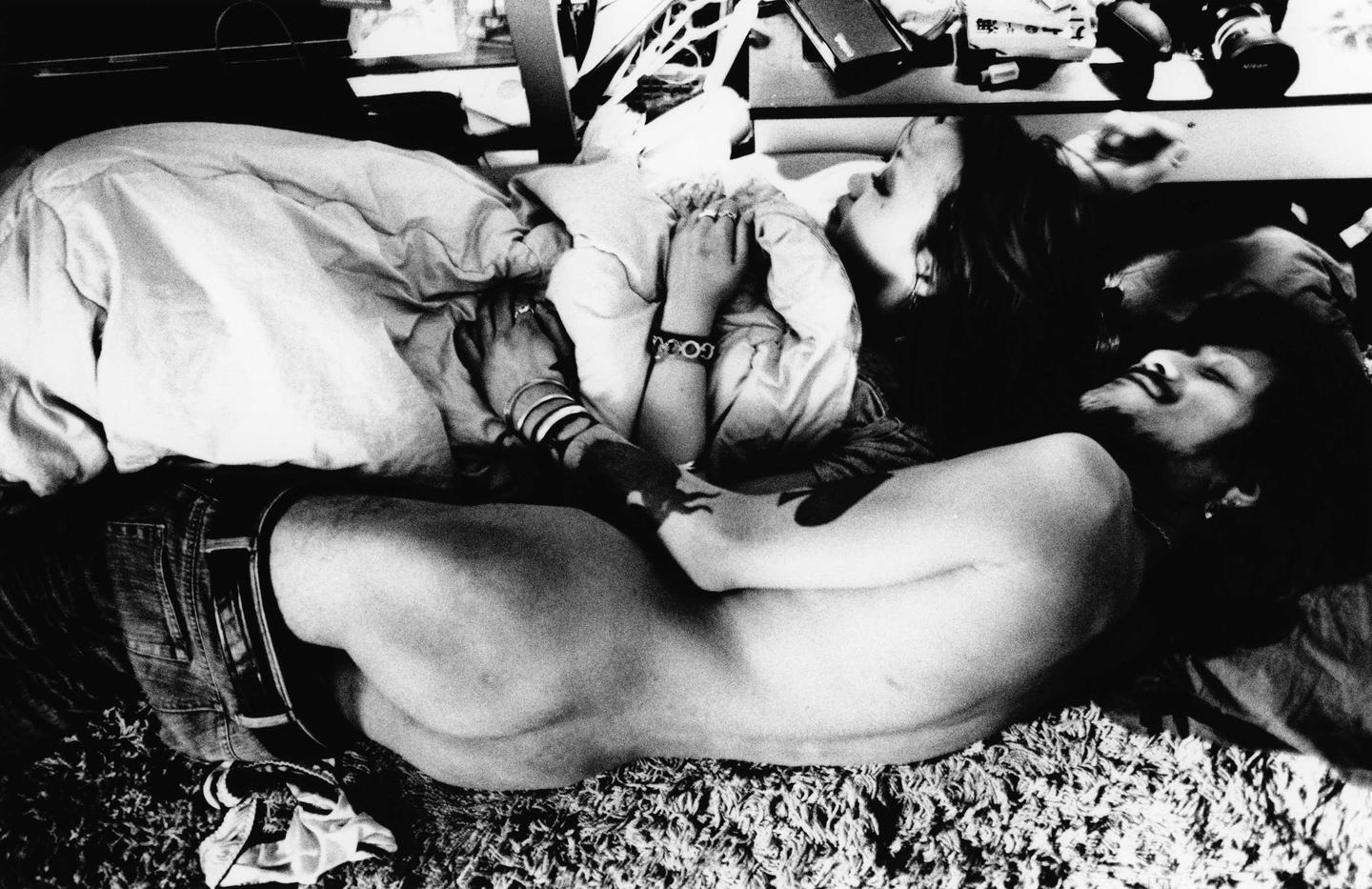
YUSUKE YAMATANI
HAPPILY
MAL
ADJUST
ED
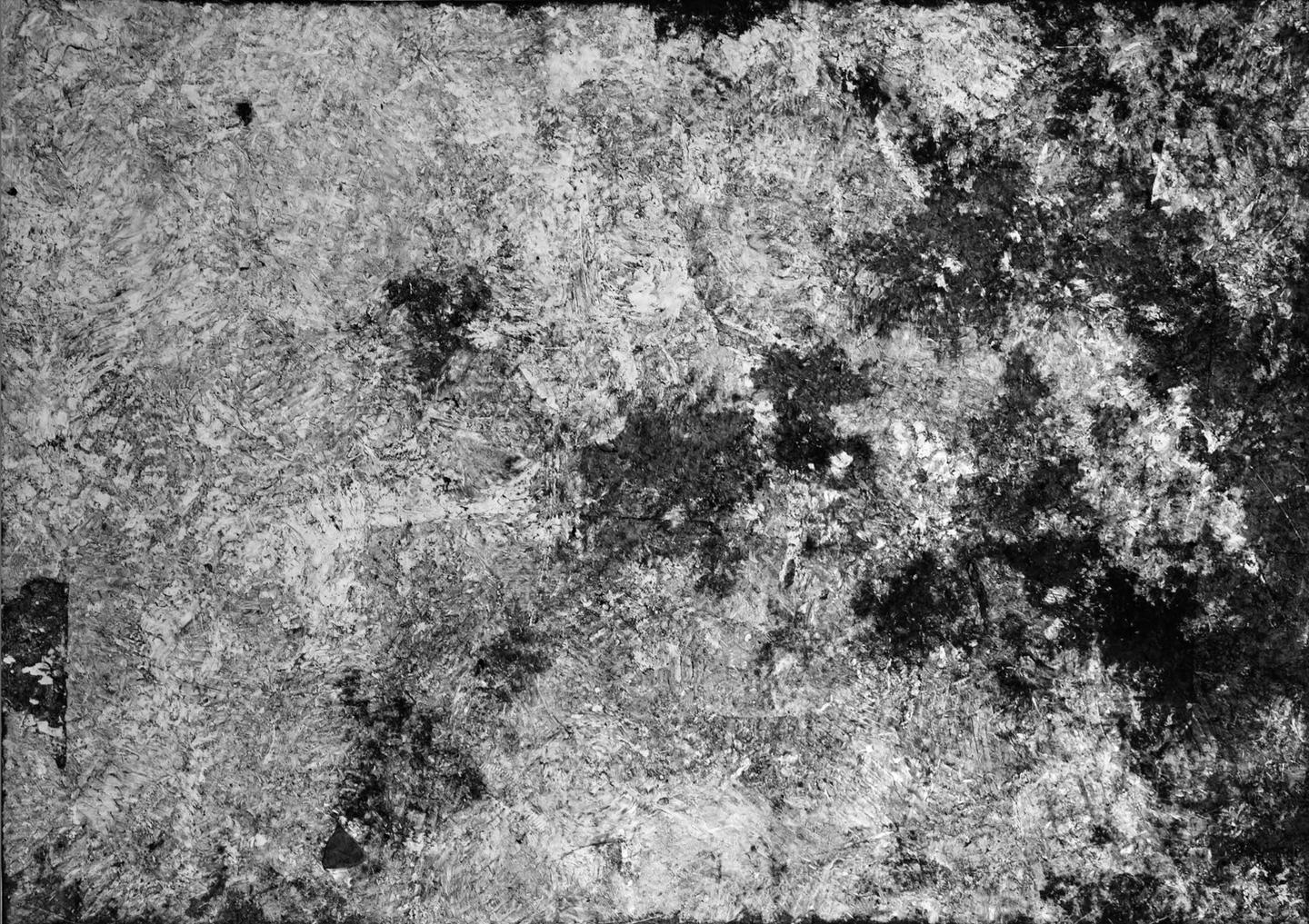
Punk obviously means many different things to many different people. For some it comes down to a specific attitude while others would define it as a lifestyle thing. Whatever your personal position might be towards punk, freedom certainly is an attribute that’s closely connected to it. And that’s when the work of Japanese photographer Yusuke Yamatani comes into play.
Yamatani is an up-and-coming photographer based in Tokyo, and it’s actually pretty safe to say that his definition of punk comes down to the freedom to create. Or better: to get hammered during a raucous live show with your friends and then create something regardless of the actual outcome because as the great Patti Smith once said, “punk rock to me is about the freedom to be successful, freedom to not be successful, freedom to be who you are“. With a few exhibitions in Japan and abroad under his belt already, his star seems to be a steadily rising one. He took a break from preparing an upcoming show titled “Honeymoon“, which will open later this year at Tokyo’s Yuka Tsuruno Gallery, to give Lodown an account of himself.
Yusuke, there isn’t too much information about you on the Internet, so please introduce yourself. Where are you actually based and how did you discover photography as your favorite visual medium?
I have played in bands since I was a teenager. When I turned 22, I wanted to do something that I could accomplish by myself rather than playing in a band. I started to take photographs using the camera that my girlfriend owned at the time... by the way, this is significant because her ex and the one before him were both photographers! After that, I took an assistant job at a commercial studio in Tokyo. This didn’t satisfy me though, so I left the job and traveled around Japan in order to learn photography. I eventually got to Nagasaki where local amateur photographers taught me some great skills in their darkrooms... and they introduced me to Shomei Tomatsu, a legendary Japanese photographer. Tomatsu saw 20 prints of mine and told me to take 500 photographs every week. I made my 500 photographs into contact sheets and went to see Tomatsu every week for 3 months. He looked at each picture very carefully and picked up some of them. The images he selected were often different from those I expected. He had no interest in those photographs that I had taken intentionally but always picked the ones I had shot without thinking. He didn’t tell me a lot about why he chose those images but the conversation certainly made me think about the accidental nature of photography and the choice making involved in its process. The encounter with Tomatsu made me decide to take snapshots on the streets. After that, I moved to Osaka by following my instinct to capture it and completed one of my earliest series, called “Tsugi no yoru e (On to the next night)”. Now, I am based in Tokyo.
The very majority of your photography is strongly connected to subcultures such as punk and skateboarding... what’s your connection to these scenes?
Music was my everything when I was a teenager. Before I started taking photographs, I played at music venues almost every week. Such a variety of people were hanging around at those places. There were musicians, skateboarders, artists, fashion designers, girls acting bitchy, labourers and so on. My whole life was steeped in music culture. My thoughts, fashion, and basically everything I selected were deeply affected by music. I have been changing and now I am tolerant to many things. But a core part of myself has been consistent since I was a teen. Actually this is common to many of my friends. People act natural when it comes to corroborating with music and that exists in a street scene and simple everyday things as well. I am not interested in capturing moments where someone is trying to show their best sides on purpose.
I read that you have traveled a lot to discover other underground communities in countries such as Thailand, the US, or Italy. What did you find there you couldn’t find in Japan?
Japan has been economically developed with rapid economic growth after the war. It all happened before I was born. Economic growth should be strongly related to importing other cultures from abroad and developing their original cultures. So, Japan was able to acquire movements and cultures from abroad at pretty much the same time as they were happening. However, people in our generation have never experienced these moments where a culture was actually born and blooming. In other words: almost everything has been provided since I can remember. These days the Internet and SNS is basically available for everyone and it’s an important tool to get the latest information, but on the other hand our generation feels cooped up. In some countries in South East Asia, people have very strong passions that we never had. They are now trying to integrate parts of Western culture born decades ago into their own. On the contrary, some theories are introduced in practical fields in Europe in terms of issues related to the way of life, that is what we are facing in Japan. For us, people in Japan, it is a time to shift our system by ourselves.
I've traveled to Japan a few times myself, and from what I’ve experienced, there seems to be much more of a healthy community life in Osaka... while in Tokyo it’s more about sophistication and egoism. Would you agree to that observation?
I do agree with you. I mean, at the moment I live in Tokyo... in 2010 though, I really wanted to capture Osaka so I moved there and stayed for about a year. Tokyo was too big to shoot something very local, which I was aiming for. The city size of Osaka was perfect for me. In fact, people in Osaka are healthy in terms of expressing themselves. They’re able to show their personal feelings and emotions in public, whereas in Tokyo, people seem to be a bit selfish and cold-hearted in comparison. I like my photography being filled with humanism rather than something sophisticated... and that’s the reason why I chose to stay in Osaka.
You play drums in a band called “Neighbors“. Am I correct to assume that this is a punk band? So when you take pictures of that scene, do you consider yourself as just an observer or do you want to show and share an important part of your life?
Neighbors is a punk band. To be honest, I don’t go to see gigs that often these days anymore, and I don’t drink the night away anymore. Without any hesitation, I accept that change in my life. As a result, I’m taking less snapshots than before and also treat the band less as a photographic subject. My interest as a photographer these days is aiming towards something wider... and paradoxically something more intimate at the same time. Yet, it is the engine of my creativity to see members in our band every week, and to meet up with friends at my gigs. Music venues for me are places filled with personal memories and experiences.
Would you say that you work differently when you shoot in b/w in contrast to shooting in colour? And do you prefer analog or digital photography?
I prefer analog cameras. However, that doesn’t mean that digital is bad. Fortunately, there are many camera manufacturers in Japan... I am fascinated by old, weird cameras and now I have a great collection of them. But I pretty much use everything - colour, b/w, large scale format, compact cameras and also digital photography. It just depends on the projects that I’m working on. In this sense, I believe equipment is a part of a concept behind an artwork.
I really like the idea behind your “Ground“ series... please tell me how this project started.
One day, I was hosting an event at a club with my friend. He asked me to show some of my photographs, so initially I installed them on the walls. But I was ashamed by the fact that I was serious about showing my pieces because the audience is a drunk one at the club, and they show up to have fun and not to see my works... it´s an easy observation to make, as I was always one of them. So, I decided to fool around the next time. For the following event, I took digital photographs of the different floors of the club and printed those in their actual size with an inkjet printer. Then those prints were stuck to the floors where they were taken... so I showed my work under the customers’ feet. It was a fun night so I was wasted as always and fell asleep in a corner of the club. In the morning, when someone woke me up by telling me to leave, I saw something that looked just like rubbish. It turned out to be one of my photographs, it was filthy with customers’ footprints and melted ink and covered with lots of rubbish. It made me totally sober all of sudden. I was fascinated by the energy from that piece of junk, and I loved that the piece of paper had traces of everyone who was there that night. Since then, I took a lot of photographs of floors at venues and night clubs in Tokyo, and I stuck the printed results to their original floors during my favorite events. I never have any permission to install those prints, so sometimes I was told off and even banned from entering some places. I guess, no one else knows the floors of the nightclubs in Tokyo as good as I do.

